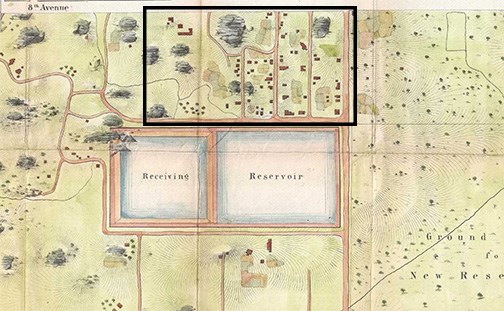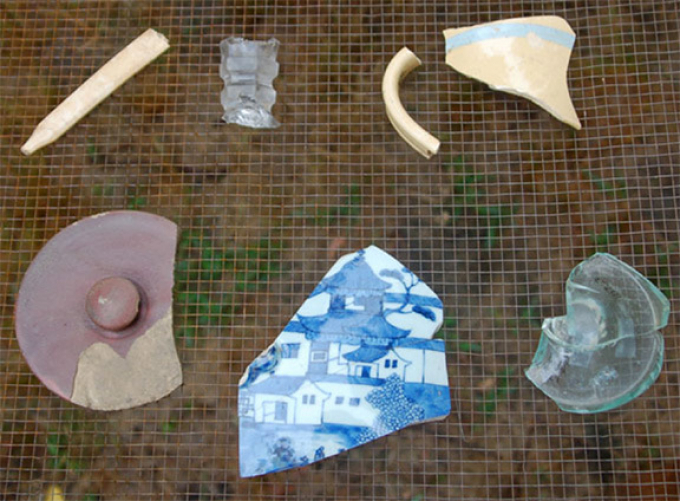 Image to the right shows an 1857 map of Seneca Village formerly located in today's Central Park in Manhattan.
Image to the right shows an 1857 map of Seneca Village formerly located in today's Central Park in Manhattan.
The History of Seneca Village
Seneca Village: The Lost History of African Americans in New York
- Founded in 1825 by free Black people
- African Americans as well as Irish and German immigrants lived there
- It gave Black men a chance to vote because they owned property
- Torn down in 1857 to construct Central Park
Seneca Village Site: New York Central Park website
 Cross-Link
Cross-Link
Seneca Village history from New York Central Park Website: https://www.centralparknyc.org/blog/seneca-village
- Seneca Village began in 1825, when landowners in the area, John and Elizabeth Whitehead, subdivided their land and sold it as 200 lots. From 1825 to 1832, the Whiteheads sold about half of their land parcels to other African-Americans.
- By the mid-1850s, Seneca Village comprised 50 homes and three churches, as well as burial grounds, and a school for African-American students.
- Despite New York State’s abolition of slavery in 1827, discrimination was still prevalent throughout New York City, and severely limited the lives of African-Americans. Seneca Village’s remote location likely provided a refuge from this climate. It also would have provided an escape from the unhealthy and crowded conditions of the City, and access to more space both inside and outside the home.
- During the early 1850s, the City began planning for a large municipal park to counter unhealthful urban conditions and provide space for recreation. In 1853, the New York State Legislature enacted a law that set aside 775 acres of land in Manhattan — from 59th to 106th Streets, between Fifth and Eighth Avenues.
- The City acquired the land through eminent domain, the law that allows the government to take private land for public use with compensation paid to the landowner. There were roughly 1,600 inhabitants displaced throughout the area. Although landowners were compensated, many argued that their land was undervalued. Ultimately, all residents had to leave by the end of 1857.
Frederick Law Olmstead designed Central Park.

A Village Dies, A Park Is Born, The New York Times (January 31, 1997)
 Video:
Video:
https://www.vox.com/2020/1/20/21070883/central-park-seneca-village
This video emphases the role of free African American people living in New York and the racial tension that arose.
This video explains the formation of African American communities that gave black men the right to vote because they owned property. It also goes into detail why NYC gave the residents a bad reputation that made them seem worse than they were.
However in 2011 it was discovered Seneca Village was not a shanty town but a working and middle class community and growing neighborhood of black property owners.
Free African Americans Before the Civil War
Free Blacks in the Antebellum Period, Library of Congress

The highlighted area shows Seneca Village in 1856. The area shown as the “Receiving Reservoir” is now the Great Lawn.
Recent history relating to Seneca Village:
- They uncovered artifacts such as an iron tea kettle, a roasting pan, a stoneware beer bottle, fragments of Chinese export porcelain, and a small shoe with a leather sole and fabric upper.
- These items have helped us piece together what life was like for the village’s residents.

Various artifacts discovered during excavation of the Wilson house.
From top left and moving clockwise: handle of a bone toothbrush; glass fragment from candlestick or lamp; handle and body fragments of a yellow ware pitcher; base of a bottle, possibly for wine; fragment of Chinese porcelain vessel; stoneware jar lid. Photo courtesy of the Institute for the Exploration of Seneca Village History.
Comments (0)
You don't have permission to comment on this page.